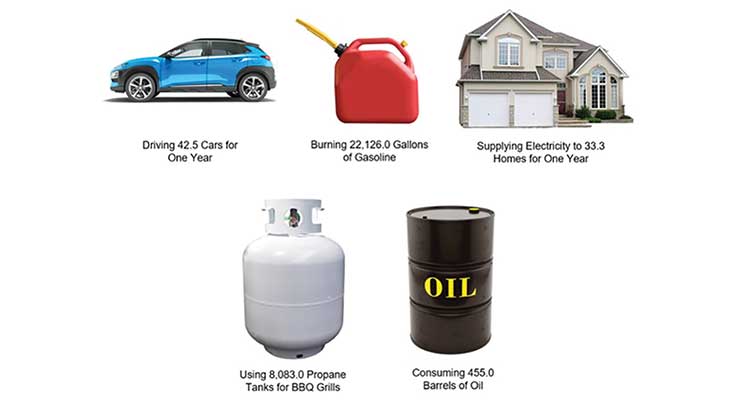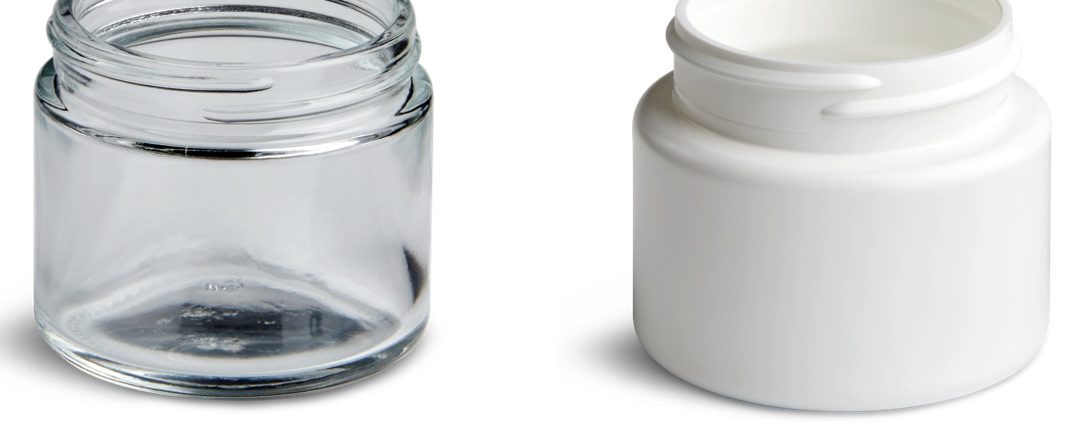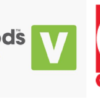Glass or Plastic: Understanding the Complete Costs & Sustainability Impact
Plastic packaging offers compelling advantages over glass.
Source: By Jeff Johnson, Director of Marketing & New Business Development, Drug Plastics & Glass Co., Inc.
Glass and plastic make up most bottles and jars used for product packaging on retail shelves. Companies searching for packaging have thousands of standard glass and plastic bottles to choose from, and both materials can easily be used to make customized shapes and sizes.
However, plastic is well-known for having some significant advantages for the consumer. For example, plastic is convenient. It weighs significantly less than glass, making it easier to carry and transport. It is also much more forgiving when bumped, dropped, or shaken, resulting in less breakage. These characteristics make plastic an easy, less-stressful option than glass for today’s active lifestyles.
Plastic is also often the safer choice. When glass breaks it shatters and presents a safety hazard for the consumer during cleanup and handling. When filling and packaging product at the manufacturing facility, glass also presents a greater safety and productivity issue because removing broken bottles from the workspace can lead to injury and reduce efficiency. Additionally, glass can chip while being filled. This creates the potential for glass slivers to come into contact with or be ingested by consumers.
In addition to some of the more obvious advantages, plastic offers substantial benefits in the areas of cost and sustainability. It is important to have all the information needed to make sound decisions about the type of packaging you choose. This analysis into both cost and sustainability will help you make an informed choice about whether to utilize glass or plastic as your packaging material.
Plastic Offers Lower Costs in 3 Key Areas
Transportation Costs: Advantage Plastic. Shipping glass can become expensive fast. Glass has a density of approximately 2.6 g/cm3. HDPE plastic is approximately 0.9 g/cm3. This means that a piece of glass the same size as a piece of plastic is almost three times heavier. When you take into consideration that plastic bottles can be made thinner than glass bottles, glass becomes comparatively even heavier. Comparing a 2-oz. glass jar and a 2-oz. HDPE plastic jar that were both dimensionally similar and have 53 mm neck openings shows the significant difference. The 2-oz. glass jar weighs 82.2 grams whereas the 2-oz. plastic jar weighs 13.0 grams. This means each plastic jar is only 15.9% as heavy as 1 glass jar. It would take 6.3 plastic jars to equal the weight of just 1 glass jar. This is a substantially significant difference. When ordering pallets of bottles in bulk, this weight difference can add up to large figures that impact your profit margin. If you need to ship your packaging long distances, plastic has a clear economic advantage.
Shipping & Handling Loss: Advantage Plastic. Consider all the shipping that occurs to receive empty bottles, fill the bottles, and then distribute the filled bottles to your customers. Consider all the people who touch these bottles at every step of the process and all the material handling that occurs. Even with extreme care during shipping and handling, some glass bottles might break. Plastic, on the other hand, is more durable and resistant to breakage, making it much more suitable to shipping and handling than glass. Plastic is more likely to resist shakes, bumps, and bruises, making it a much more durable alternative. Glass chips, cracks, and shatters, which eats into your profit margin.
Production Costs: Advantage Plastic. Not only is glass more expensive to ship and handle, it also costs more to produce, primarily due to the amount of energy and extreme heat required during production. The melting point of plastic is much lower than glass, requiring less energy during production. With new technology developments in plastic molding, manufacturing plastic containers has become even more affordable. Working with a plastic manufacturer that ensures products are produced efficiently will save energy and will keep costs down. Plastic surpasses glass in terms of economical production, making it a less costly packaging alternative for you and the consumer.
Plastic Offers Similar Benefits to Glass in 3 Sustainability Areas
Recycling Potential: Advantage Either. Most glass used to make packaging is 100% recyclable and can be recycled endlessly without loss in quality or purity. However, some glass, such as tempered glass and crystal, is not recyclable. Similarly, some plastics, such as PVC, are not recyclable. But bottles made of HDPE, LDPE, or PET plastic, are readily recyclable.
However, unlike glass, plastic can only be down-cycled, meaning it ultimately becomes an item of lesser quality. For example, when you recycle a plastic bottle, it typically is not used to make another bottle and instead is used for synthetic clothing or carpets. Eventually, this leads to the bottle becoming a waste item that is no longer recyclable and destined to end up in a landfill. The exception to this is Post-Consumer Recycled (PCR) PET and PCR HDPE where bottles can be recycled over and over again. This sustainable option is discussed in further detail below.
Recycling Reality: Advantage Either. The U.S. Environmental Protection Agency (EPA) combined data from the Glass Packaging Institute with information from state environmental agencies to measure the recycling of glass containers in the U.S. The agency determined that the amount of recycled glass containers was 3 million tons in 2017, for a recycling rate of 26.6%.
Similarly, the EPA used data from the American Chemistry Council and the National Association for PET Container Resources to measure the recycling of plastic. The overall amount of recycled plastics is relatively small, however, the recycling of some specific types of plastic containers is more significant. For example, the recycling rate of PET bottles and jars was 29.1% in 2017, and the rate for HDPE natural bottles was 31.2% in 2017.
Biodegradability: Advantage Either. Glass takes 1 million years to decompose in the environment, perhaps even more in a landfill. In fact, glass does not really decompose; it just turns into finely crushed glass resembling sand. Plastic takes 450+ years to decompose in the environment and up to 1,000 years in a landfill. Plastic never truly decomposes either; it turns into microplastics which continue to exist in the environment.
Plastic Surpasses Glass in 3 Sustainability Areas
Sustainability of Raw Materials: Advantage Plastic. Making new glass requires sand. Although we have tons of sand on beaches, in the deserts, and under the ocean, we’re using it faster than the planet can replenish it. Additionally, most desert sand is gypsum. High silica sand is required to make glass; this type of sand is typically found in active or extinct river beds and sea beds.
Removing sand from the natural environment disrupts the ecosystem. Microorganisms that live on it represent the bottom of the food chain. Removing sand from the sea bed leaves shore communities prone to flooding and erosion. Since sand is needed to create new glass, you can see the impact these issues have.
Most plastic (not including bio-plastics) are petroleum-based, which make the materials non-renewable and unsustainable. Drilling for oil disturbs both the land and marine ecosystems. Often, dealing with oil can result in oil spills, which contaminate soil and water and may cause catastrophes such as fires and explosions. However, there are alternatives. Bioresin HDPE is made with resin derived from renewable crops, such as sugarcane, unlike traditional HDPE which uses resins derived from fossil fuels, like oil and natural gas. It is also 100% recyclable in the current HDPE stream. Although the supply on Bioresin HDPE is limited, future developments may make this option viable for all users in a few years.
But if we want to conserve raw materials, recycling is the answer. Recycling plastic is more environmentally-friendly than recycling glass because it requires significantly less energy. Post-Consumer Recycled (PCR) PET and PCR HDPE are popular planet-friendly options. Both resins help to reduce greenhouse gas emissions that are damaging our planet. In a circular economy, making new products from PCR resins removes plastic from the environment by converting plastic discarded by the consumer back into resin that can be used again. These resins are also fully recyclable in the current recycling stream.
Energy Cost to Produce: Advantage Plastic. Going from sand to a glass bottle is typically an integrated process where sand enters a manufacturing facility and glass bottles exit. Manufacturing glass is an extremely heat-intensive process. The raw materials are placed in a furnace where they are heated to 2,600 to 2,800 degrees Fahrenheit for melting. The temperature is then reduced as the molten glass is cut, molded, and blown into its final bottle form. The glass making process requires energy that is equivalent to 3.0 grams of CO2 per 1.0 gram of glass.
Manufacturing plastic is typically a two-step process. First, a reactor is used to polymerize the hydrocarbon raw materials into resin pellets. The resin is then shipped to a processor. At the processor, temperatures of 400 to 500 degrees Fahrenheit are used to melt the resin and blow it into a mold to form the shape of the bottle. The energy used to make and process plastic is equivalent to 3.8 grams of CO2 per 1.0 gram of plastic.
These numbers only tell part of the story. As discussed earlier, making bottles out of glass requires much more material. Once again, we found it beneficial to look at our two similar glass and plastic 2-oz. jars. An 82.2-gram glass jar at 3.0 CO2 equivalents per gram has a total impact of 246.6 grams of CO2 equivalents per jar. The lighter 13.0 gram HDPE plastic jar with 3.8 CO2 equivalents per gram has a total impact of 49.4 grams of CO2 equivalents.
The plastic jar has only 20% of the carbon impact of the glass jar. It would take five plastic jars to equal the environmental impact of one glass jar. This demonstrates the full story when comparing the energy needed to make glass versus plastic. Plastic has a substantial advantage.
To fully appreciate how significant the CO2 savings is with plastic, we’ll use the example of an order of 1 million 2-oz. jars. In this scenario, glass jars yield 246.6 metric tons of CO2, but plastic jars only yield 49.4 metric tons of CO2. Plastic yields a savings of 197.2 metric tons of CO2. For perspective, this savings is equivalent to the everyday items seen in Figure 1.

Figure 1. Equivalence to 197.2 Metric Tons of CO2
Energy to Transport: Advantage Plastic. Due to the fragility of glass and the need for extra packaging, a trailer can carry a greater number of plastic bottles. Once the glass or plastic bottle is produced and ready for sale, it still takes more fuel to transport glass products the same distance as plastic products. Again, this is because glass is heavier, as seen in our 2-oz. jar example where 6.3 HDPE plastic jars weighed the same as 1 glass jar. More fuel means greater carbon emissions, which results in a greater negative impact on the environment.
Summary
Many differences exist between glass and plastic. Only you can determine which material is best for your application. However, if lower costs and greater environmental friendliness are at the top of your priorities, plastic offers compelling advantages over glass. When you understand these differences, you can make more informed decisions about your packaging options.
In addition, when you partner with a plastic manufacturer that is invested in the ongoing success of your business, you can rest easy knowing they have your best interest at heart. There is more to a relationship than just the financial transaction of buying packaging. Your plastic manufacturing partner should provide critical information that can help you decide what the best solution is for your packaging.
References & Further Reading
https://goingzerowaste.com/blog/which-is-better-for-the-environment-glass-or-plastic/
https://www.gpi.org/glass-recycling-facts
https://www.epa.gov/energy/greenhouse-gases-equivalencies-calculator-calculations-and-references
https://www.popularmechanics.com/science/environment/a3752/4291566/
About the author: Jeff Johnson is the director of marketing and new business development at Drug Plastics & Glass Co., Inc. Located in Boyertown, PA, Drug Plastics is committed to making people’s lives better by producing packaging that is functional, easy to use, and safe. Drug Plastics is a leading manufacturer of HDPE bottles, PET bottles, and plastic closures for medicinal, wellness, and lifestyle products. For more information visit www.drugplastics.com.




